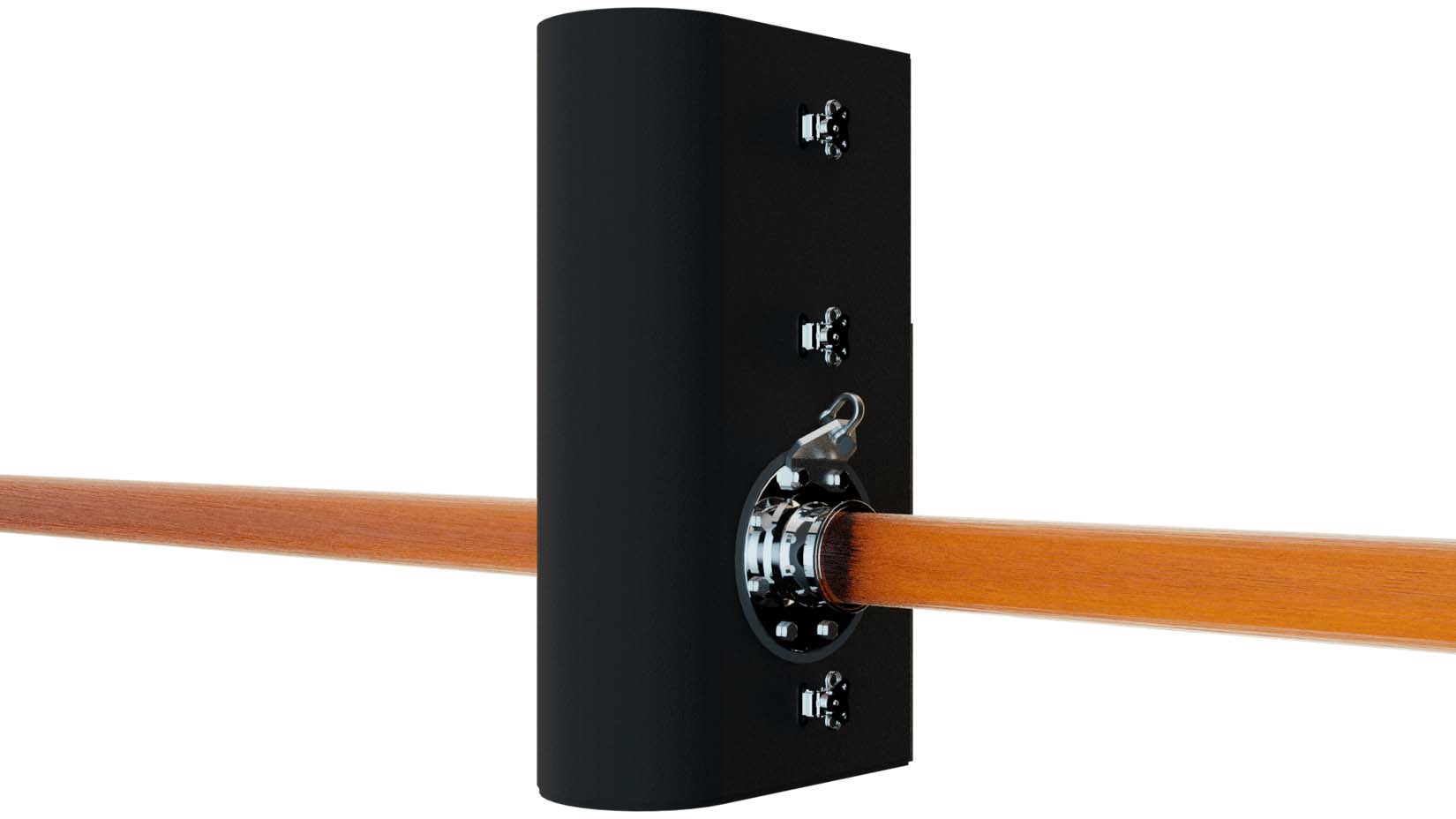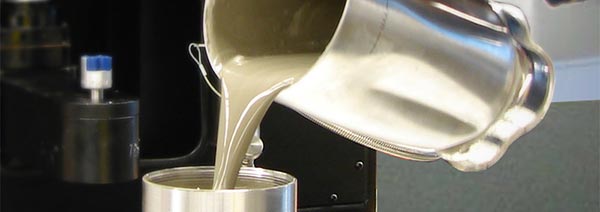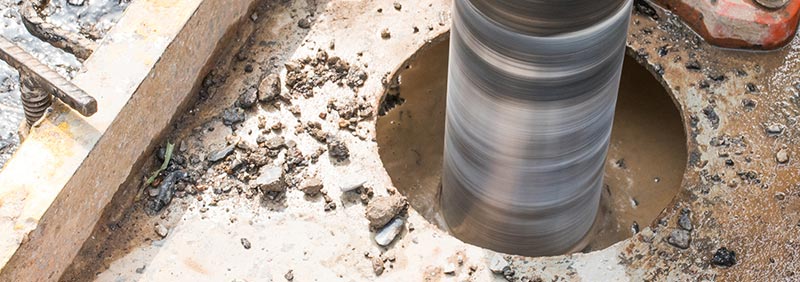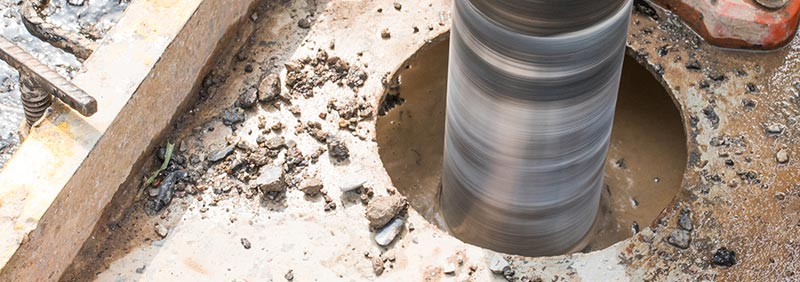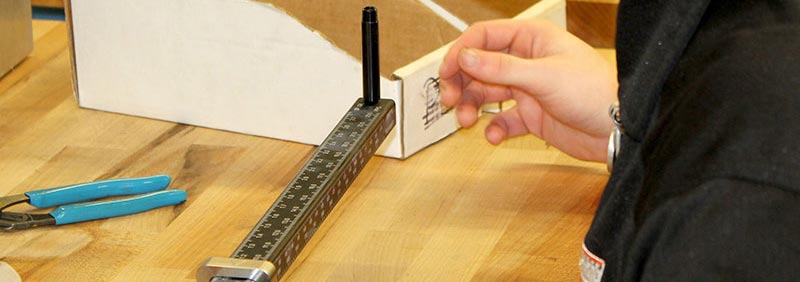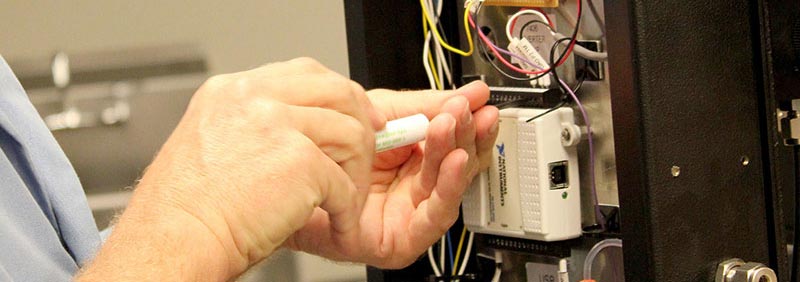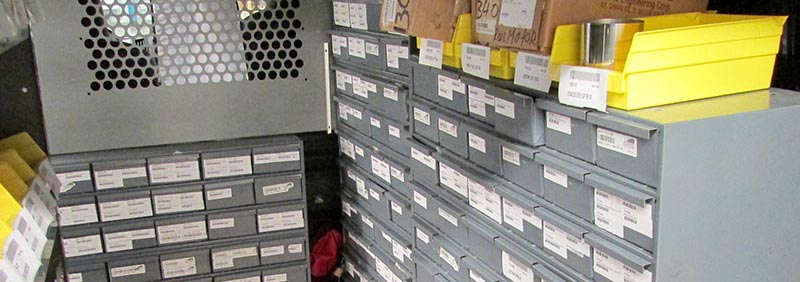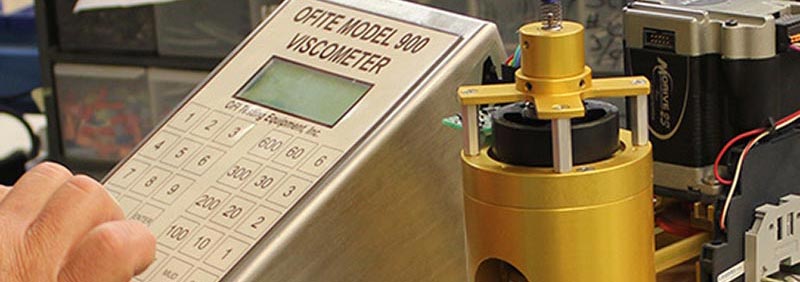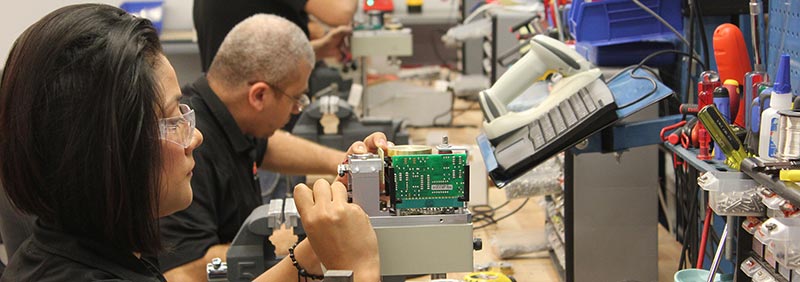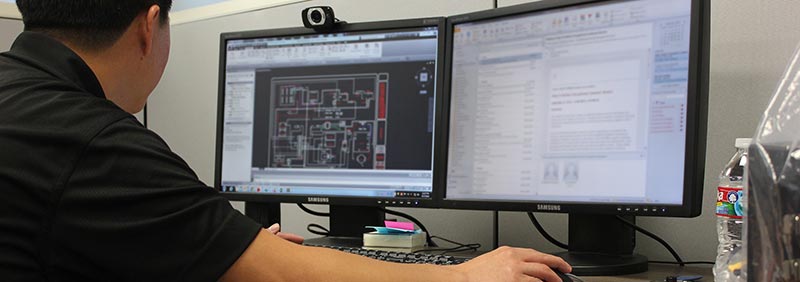Newsroom
OLR Cement Testing
OFITE has long been an industry leader in drilling fluids rheology. Now we will expand the toolkit for understanding how fluids behave in the well bore. We built a special flow loop, using a Positive Displacement Progressive Cavity Pump, to pump slurries through several measurement devices. One of those devices is the OLR Series 1000 OnLine Rheometer (OLR) which measures storage and loss moduli by imposing a small cyclic deformation on a fluid sample at a variety of frequencies.
In general, the OLR uses two plates that come down very close to each other and “squeeze” a fluid between them. One plate oscillates at a predefined range of frequencies and the other plate is connected to a small load cell that measures the force from the oscillating plate. Then the top moves up and allows a new sample to come between the plates. This process is repeated, providing a trend in rheological properties of a fluid that can be used to identify baselines and deviations during the process.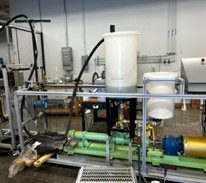
To successfully run cement through the system we had a limited amount of time before the cement started to set and had to be purged out of the lines. And while neat cement slurries have relatively small particle size ingredients, we are interested to see how the performance is affected as we add larger and larger particle size additives to the slurry. This first test was done on a mixture of just water and Type I cement (average particle size below 20 micron). In the future we will be adding larger and larger particles to test the limits.
The first two photos below show the simple flow loop set up. Five gallons of water was poured into the top reservoir and fifteen gallons of water was poured into the smaller reservoir on the side. The valves were opened, and the pump was started, giving a baseline reading with just water. At regular intervals, approximately 7 pounds of dry cement powder was added to the water in the top reservoir where a high-speed blender mixed the slurry along with the recirculation of the water through the system. The slurry visibly got thicker as more and more solids were added. The OLR measured the rheological properties during the entire two-hour test.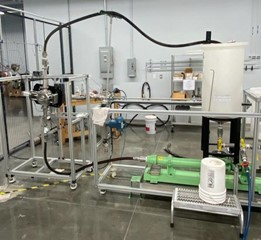
After each addition of cement powder, we measured the density of the slurry and ran a common shear viscosity test on a rotational Couette style viscometer to see if there were any comparisons to be made between the different methods of rheological determination. When it seemed that the cement was starting to gel up and we were concerned about the cement hydrating, we stopped pumping briefly while we put the outlet hose from the top reservoir into a small pool. The cement was allowed to dry and harden before being disposed of.

